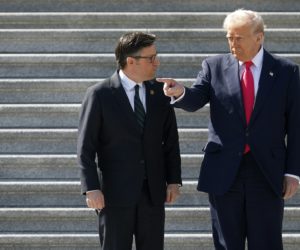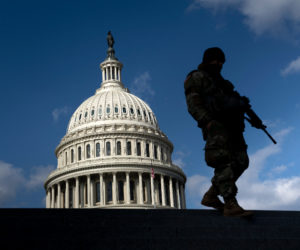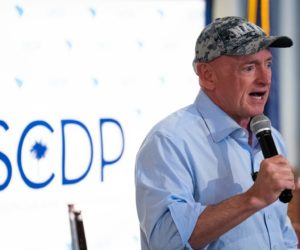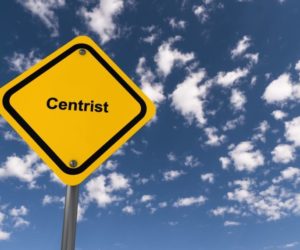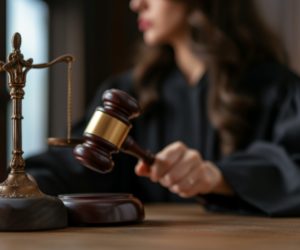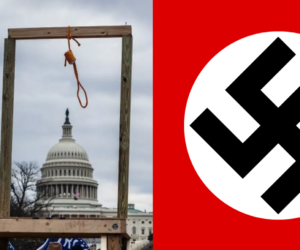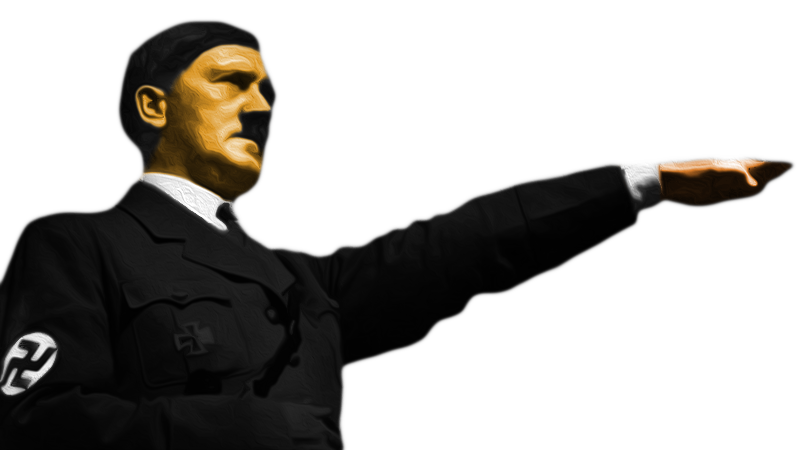
Adolf Hitler became German Chancellor (prime minister) because his party, the National Socialist Party (Nazi), received more votes in parliamentary elections in 1932. Hitler cynically used the democratic process; he was never a believer in democracy. His dictatorial ambitions were published in Mein Kampf (My Way) in 1925, a clear declaration of his global domination plans. It should have been no surprise when he began dismantling democracy as Chancellor eight years later, in January 1933.
The remarkable speed of this dismantling was aided by economic and political circumstances. Germans suffered in post-WWI inflation which destroyed German currency value, and in the worst years of the Great Depression, 1932 and 33. Politically Germans blamed their woes on the Versailles Treaty ending WWI, which financially penalized Germany for the war. Hitler took advantage of these circumstances. He added Jews and Communists as causes of the economic and political disasters, and he promised to rebuild Germany as a proud, purified, victorious nation.
Hitler had another advantage. In 1922 the Nazi Pary formed the Brown Shirts, a uniformed, armed militia auxiliary to the party. When Hitler became Chancellor there were 4 million enrolled Brown Shirts. They were used to physically intimidate any perceived opponents and critics of the party. The Brown Shirts operated outside the legal system, but the Weimar Republic, the democratic government of Germany, was too weak to stop them. In February 1933 Hitler began using the Brown Shirts and some German police to arrest and imprison political opponents without trial.
Hitler as Chancellor immediately created two alliances that helped him end German democracy. In February 1933 he met with German military leaders, who wanted to rebuild and modernize the military. Hitler promised he would do exactly that if they stood aside while he overthrew the Weimar Republic. In the same month he met with German industry leaders. He told them that a rebuilt military would strengthen German industry and enrich the industrialists.
Hitler quickly followed the alliance-building by neutering the Reichstag, the German legislature in March 1933. Not coincidentally the first concentration camp opened in the same month. Legislators from opposing parties were arrested and imprisoned in the camp. Their absence allowed the Nazi party legislators to propose and pass the Enabling Act, the ‘legal’ document that formally destroyed democracy and established the dictatorship. The act dissolved and outlawed all trade unions and political parties in Germany, except the Nazi party. All state governments within Germany were taken over by Nazi officials. Members of the judiciary who might have challenged the act were intimidated or arrested.
Hitler then drove three final nails into the coffin of democracy. In October 1933 the Nazi-controlled Reichstag passed the Editor’s Law, which placed all German media outlets and journalists under control of the Party. In August 1934 he changed his official title from Chancellor to Der Fuhrer, Supreme Leader. And in that month Hitler required that all military personnel and government workers take a personal oath of loyalty to him, Der Fuhrer, not to a constitution. In a little over s year and a half Hitler destroyed a democracy, and the votes and polls in the 1932-34 time frame showed that the majority of Germans approved of the destruction of their own democracy.
Could a similar trajectory happen in the United States? Of course it could, because any democracy can be overthrown, but it is unlikely.
Hitler’s rise was aided by a special set of circumstances. They were: 1) a large, well-armed gang willing to do his bidding; 2) a police force willing to make unlawful political arrests; 3) a concentration camp system to imprison political opponents and undesirables; 4) a military willing to look the other way while democracy is dismantled; 5) a neutered legislature and an intimidated judiciary; 6) complete control of the media; 7) a very weak democratic national government; 8) very bad economic circumstances; 9) and perhaps most importantly, a population unfamiliar with democracy that willingly accepted the destruction of democracy.
None of these circumstances currently exist in the United States. Perhaps the circumstance closest to reality is the lackadaisical attitude that many current Americans have about democracy. They seem to assume that the hard work of establishing and maintaining democracy was completed in the past, and now we can just coast and enjoy the fruits of their labors. Democracy can only exist if each new generation works to maintain it, because there are always those living in a democracy who wish to destroy it.
By Kadumago – Own work, CC BY 4.0, https://commons.wikimedia.org/w/index.php?curid=90395348

